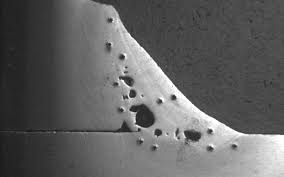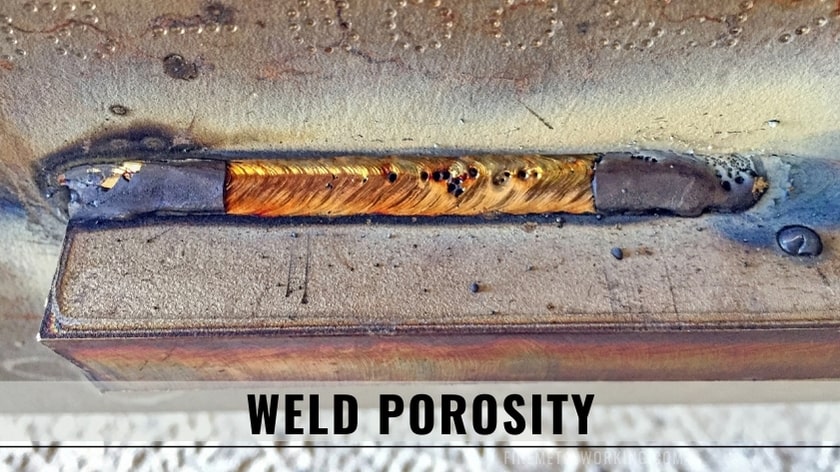Untangling the Mystery of Porosity in Welding: Tips for Decreasing Defects and Making The Most Of Quality
In the detailed globe of welding, porosity continues to be a relentless obstacle that can significantly impact the quality and honesty of bonded joints. As we dive right into the midsts of porosity in welding, revealing the tricks to its avoidance and control will be vital for professionals seeking to understand the art of high-quality weldments.
Understanding Porosity in Welding
Porosity in welding, a common issue come across by welders, describes the existence of gas pockets or gaps in the welded product, which can endanger the stability and high quality of the weld. These gas pockets are usually caught during the welding procedure as a result of different aspects such as incorrect shielding gas, infected base products, or inaccurate welding parameters. The development of porosity can deteriorate the weld, making it vulnerable to breaking and corrosion, inevitably causing structural failings.
Comprehending the origin of porosity is vital for welders to successfully prevent its event. By acknowledging the significance of keeping appropriate gas shielding, making certain the tidiness of base products, and enhancing welding settings, welders can significantly minimize the likelihood of porosity development. Additionally, making use of techniques like pre-heating the base material, using appropriate welding strategies, and carrying out thorough assessments post-welding can further help in minimizing porosity issues. In general, a thorough understanding of porosity in welding is important for welders to generate top quality and long lasting welds.

Usual Causes of Porosity
When inspecting welding processes for prospective top quality issues, understanding the usual reasons for porosity is vital for keeping weld integrity and avoiding structural failings. Porosity, identified by the visibility of cavities or voids in the weld metal, can substantially jeopardize the mechanical residential or commercial properties of a welded joint. One typical reason for porosity is incorrect protecting gas insurance coverage. Poor securing gas flow prices or inappropriate gas combinations can bring about climatic contamination, causing porosity development.
Furthermore, welding at improper criteria, such as excessively high traveling speeds or currents, can produce excessive disturbance in the weld swimming pool, capturing gases and triggering porosity. By resolving these typical reasons through correct gas shielding, product prep work, and adherence to optimal welding specifications, welders can minimize porosity and improve the quality of their welds.
Methods for Porosity Avoidance
Executing reliable preventive procedures is crucial in decreasing the incident of porosity in welding procedures. One technique for porosity prevention is making certain proper cleaning of the base steel prior to welding. Contaminants such as oil, grease, rust, and paint can result in porosity, so complete cleansing utilizing ideal solvents or mechanical techniques is crucial.

Another secret preventative measure is the selection of the ideal welding consumables. Making use of high-quality filler materials and protecting gases that appropriate for the base steel and welding process can considerably minimize the threat of porosity. In addition, maintaining proper welding parameters, such as voltage, current, travel speed, and gas flow rate, is crucial for porosity avoidance. Drifting from the advised setups can cause incorrect gas insurance coverage and inadequate blend, leading to porosity.
In addition, using appropriate welding techniques, such as preserving a constant travel rate, electrode angle, and arc size, can assist prevent porosity (What is Porosity). Ample training of welders to guarantee they comply with finest practices and quality control procedures is additionally necessary in decreasing porosity flaws in welding

Finest Practices for High Quality Welds
One key technique is preserving correct tidiness in the welding area. Extensively cleaning up the work surface and bordering location before welding can aid mitigate these issues.
Another best practice is to thoroughly select browse this site the proper welding specifications for the specific products being joined. This consists of setting the appropriate voltage, present, travel rate, and shielding gas flow price. Correct specification selection makes certain optimum weld infiltration, blend, and general high quality. Moreover, using high-quality welding consumables, such as electrodes and filler steels, can dramatically influence the final weld top quality. Purchasing premium consumables can result in more powerful, much more sturdy welds with less defects. By following these finest practices, welders can constantly create top quality welds that satisfy sector requirements and surpass customer assumptions.
Value of Porosity Control
Porosity control plays an important function in making sure the stability and top quality of welding joints. Porosity, identified by the visibility of i loved this cavities or gaps within the weld steel, can dramatically compromise the mechanical residential or commercial properties and structural honesty of the weld. Extreme porosity compromises the weld, making it extra vulnerable to breaking, deterioration, and total failure under operational loads.
Efficient porosity control is essential for keeping the preferred mechanical buildings, such as strength, ductility, and durability, of the welded joint. What is Porosity. By reducing porosity, welders can enhance the total quality and reliability of the weld, making certain that it meets the performance needs of the intended application
In addition, porosity control is essential for attaining the desired aesthetic appearance of the weld. Too much porosity not just weakens the weld but also interferes with its aesthetic allure, which can be critical in sectors where aesthetic appeals are essential. Appropriate porosity control strategies, such as utilizing the appropriate protecting gas, regulating the welding parameters, and making certain proper sanitation of the base materials, are necessary for generating high-grade welds with minimal flaws.

Final Thought
Finally, porosity in welding is an usual defect that can endanger the high quality view of the weld. By comprehending the reasons of porosity and executing proper prevention techniques, welders can minimize issues and accomplish higher quality welds. It is important to manage porosity in welding to guarantee the integrity and strength of the end product. Carrying out finest methods for porosity control is important for achieving ideal welding outcomes.